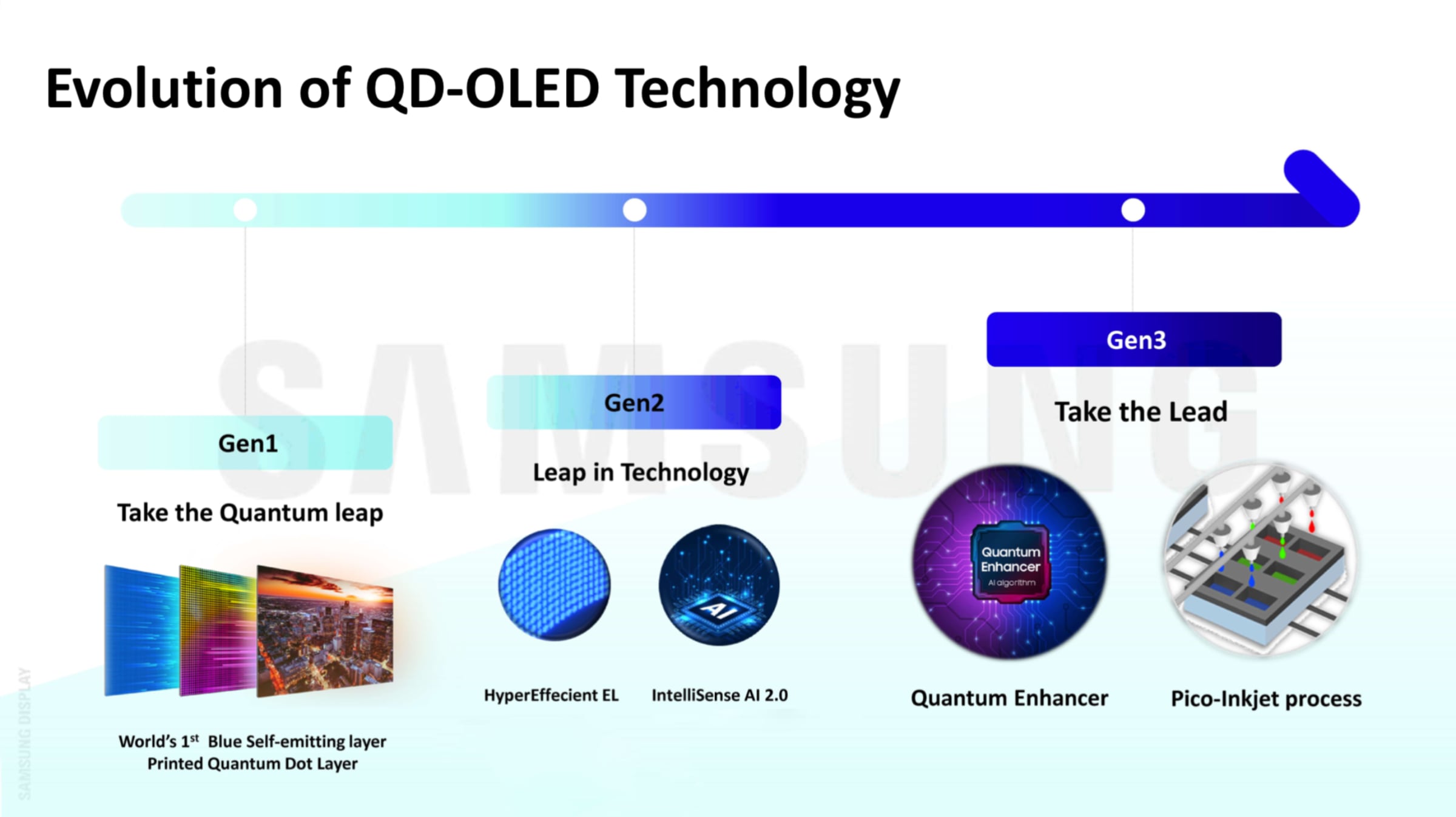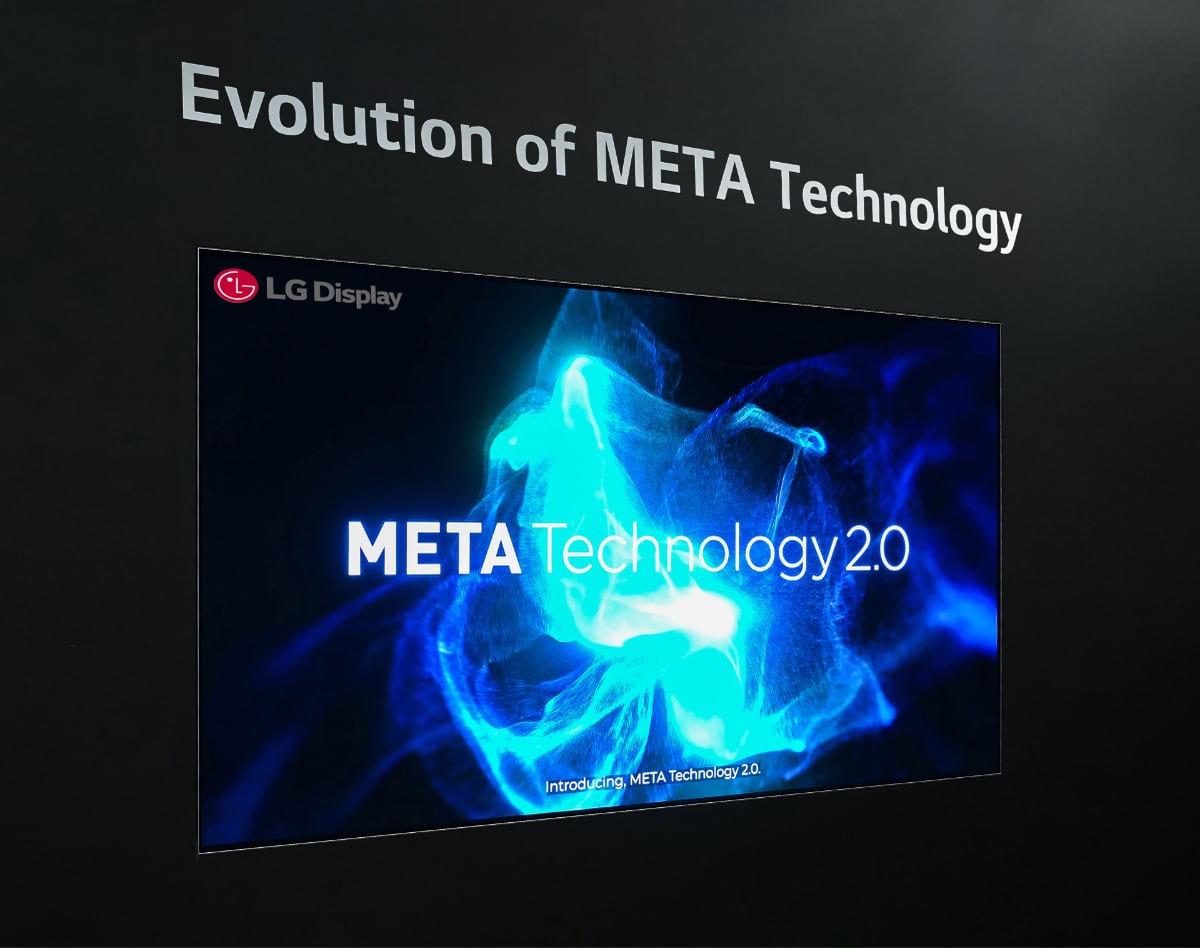INSIDE SDC AND LGD’S CES SUITES
※ご参考※ 無料翻訳ツール (DeepL)
On my first day at CES, I was fortunate enough to get into both SDC and LGD’s suites. Here is a summary of what I saw, what I felt was important and what they published about their exhibition/demo’s.
SDC
Let’s start with their foldable developments since I have a keen interest there as our foldable report writer. They had a number of demo’s under the theme “Easy to Flex, Tough to Break.”
First up was their Flex In & Out. A display that could be both in‑folding and out‑folding. My first question was of course what cover window material is being used on this product as Samsung Display is the pioneer and leader in UTG, but outfolding requires elongation and glass doesn’t elongate much. I was informed that this demo was not UTG‑based, instead it was “plastic,” which could mean CPI or PET. My bet is PET as we have heard that could be a consideration in the future for lower price point foldables. In a future product, you would want to fold it inward when transporting it as it will be more vulnerable when outfolded with the screne on the outside. They also showed the Flex Liple with Liple standing for Light and Simple. This device didn’t have a cover display. Instead, it had a simple indicator display on the top of the foldable display to see notifications. Eliminating a separate cover display will reduce cost, power and thickness and could be adopted by brands targeting lower price points.
SDC’s Flex In & Out and Flex Liple
They also showcased the Flex Hybrid again which features both foldable and slidable display capability. It was first shown at the 2023 CES. Durability and cost is the main concern with such a product. To manage the durability concerns for foldables and rollables, they had a “Flextreme” Test area where these panels were tested against fire, ice, earth, water and air. Panels were folded from ‑60 to +20°C, basketballs were bounced on them, smartphones were rubbed in the sand and immersed in water.
Flex Hybrid
The next theme was More Enormous, More Efficient, leveraging SDC’s upcoming G8.7 fab (which they call G8.6) and emphasizing IT panels with better power efficiency and higher quality. The G8.7 fab will have a motherglass more than 2x bigger than G6 with the number of 14” panels rising from 24 on their G5.5 rigid OLED fab to 88 on G8.7. In this zone, they showed:
Ultra Thin OLED panels with 0.6mm thickness. This is achieved with rigid + TFE. We believe it will get even thinner with glass thinning, with Apple reportedly targeting 0.25mm. SDC claimed moving to rigid + TFE and eliminating the top glass substrate reduced weight by over 60%. Importantly, the Ultra Thin OLED panel they demonstrated used an oxide backplane and was specified at 1Hz refresh which reduces power consumption. Note, the Ultra Thin oxide panel in their booth was 0.7mm rather than 0.6mm, but did offer a 40% reduction in weight (rather than the 60% they claimed in their marketing materials) and a 47% reduction in power consumption to 0.4W. The move to 1Hz cut logic power by 21%.
Other power savings techniques were also shown:
They showcased lower frequency LTPS down to 20Hz. We had previously seen LTPS at 30Hz, so 20Hz is a significant improvement. Aswe wrote in our Future of OLED Manufacturing Report, the key to implementing low frequency LTPS is the design of the capacity andthere are two ways – increasing the size of the capacitor or developing unique dielectric capacity materials.
Another demo was focused on edge luminance profile (ELP) where the brightness at the edges of the display are dimmed as your eyes don’t focus there. This can achieve a 20% power savings on its own and a 34% savings in power when implemented with their Intelligent Color Technology.
They also showed their experienced color range (XCR) technology which allows OLEDs to cut brightness to experience the same per- ceived brightness due to its higher color saturation and contrast ratio.
The next theme was Innovation on Wheels: Driving into the Future with OLED‑powered Cars. They built the car interior of the future filled with OLEDs which included a round OLED on the steering wheel and foldable/rollable OLEDs in the backseat. The Flex Note Extendable introduced a fusion of foldable and slidable technology, adding slidability to the Flex Note. When folded, it measures 12” and expands to 14.8” when extended on one side and 17.3” when extended on both sides. It can be used in various car scenarios or minimized. A video of it in operation can be seen here. At the same link you can see the Rollable Flex which can extend over 5X with a range from 49mm to 254mm from the roof, car headrest, etc. It can roll and unroll on an axis shaped like the letter “O” which gives it more range and scalabilty. SDC is offering a wide range of OLEDs for cars including clusters, CIDs, side view mirror replacements, pillar to pillar, etc. with flat or curves, foldables, rollables, etc.
SDC’s OLED Automotive Zone
For the first time, they showcased an XR Zone with OLEDoS technology. One production featured a 1.03” imager with 3500 PPI, 7.25µm pixel pitch ad 2560 x 2560 resolution. We also saw a direct patterned imager OLEDoS display using eMagin technology with eMagin personnel in the booth. It was capable of 10,000 nits with a 9.6µm pixel pitch which could also make it suitable for AR. They also showcased some of their military applications including helmets, rifle scopes, high definition monocular displays, etc.
The next theme was Displays Backed by Nobel Prize Winning Science leveraging the Nobel Prize awarded to the invention of quantum dots. Peak brightness has been increased on their QD‑OLEDs from 2000 to 3000 nits at the same power consumption in their 2024 lineup helped by new AI algorithms and luminance boosting drive technology. Regarding image quality, SDC again referenced their eXperienced Colour Range (XCR) technology, a novel brightness measurement method that aligns with human cognitive characteristics and they showcased comparisons with other display technologies. They also discussed their partnership with PANTONE which certified their QD‑OLEDs as the first displays to meet their standards and showed how colors displayed on QD‑OLEDs closely matched their original colors. SDC expects customers to offer reference monitors based on this technology.
SDC’s Flex Note Extendable and Rollable Flex
Speaking of monitors, SDC emphasized how better Inkjet printing resolution is enabling them to target a wider share of the monitor market. In QD‑OLED displays, SDC uses Inkjet printing for the quantum dot color converter. They have recently increased resolution from 110 to 140 PPI enabling them to offer 27” QHD and 31.5” UHD monitors in 2024. In 2025, they expect to be at 160 PPI which will enable a 27” UHD monitor. They also showcased the versatility of their monitors from gaming to entertainment to reference, etc. They introduced a 360Hz QHD monitor at 27” and have the smallest 4K monitor at 31.5” in 2024. They also showed the QD‑OLED monitors as suitable for medical displays, intricate design tasks and more.
Higher Resolution QD Monitors
LGD
LGD’s suite emphasized OLED TVs and transparent OLED signage displays. For TVs, they introduced Meta Tech 2.0 which boosts peak brightness to 3000 nits. The brightness increase can be attributed to optimizing the lens shape to maximize light output along with a luminance optimi- zation algorithm and an image quality algorithm. They also specified color brightness which was increased by 114% to 1500 nits (we interpret color brightness to mean the brightness of R + G + B). They showcased their latest WOLED TV display vs. last year’s QD‑OLED displays and recent MiniLED TVs and it looked very impressive, especially in scenes with significant white images such as white water in the ocean which appeared to be significantly brighter with more details. META 2.0 will be available on 4K at 55”, 65”, 77” and 83” and 8K at 77” and 88” this year.
LGD’s Transparent OLEDs
LGD also showed an early prototype of next year’s technology which would yield 3700 nits by going to a 4‑stack OLED design. They also won the first Circadian Friendly display image quality certification along with certifications for Low Blue Light, Flicker Free and Discomfort Glare Free.






